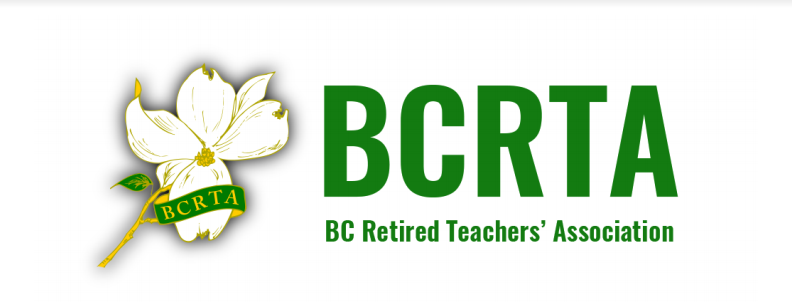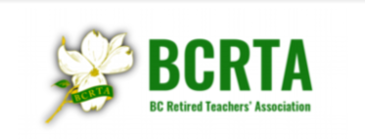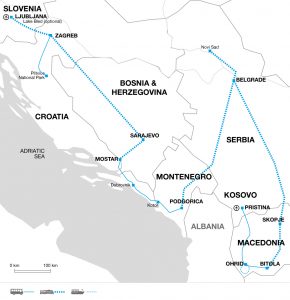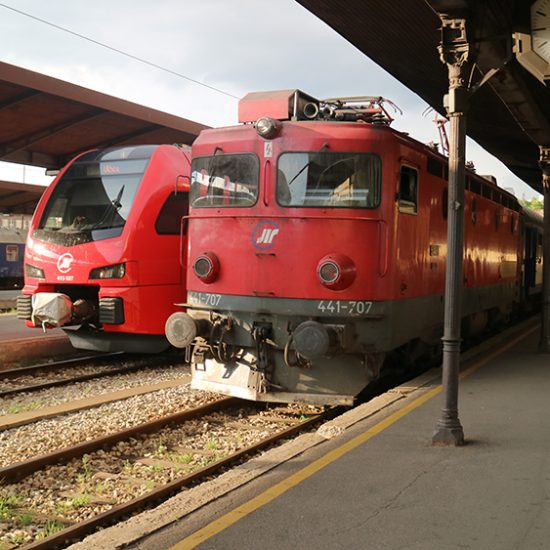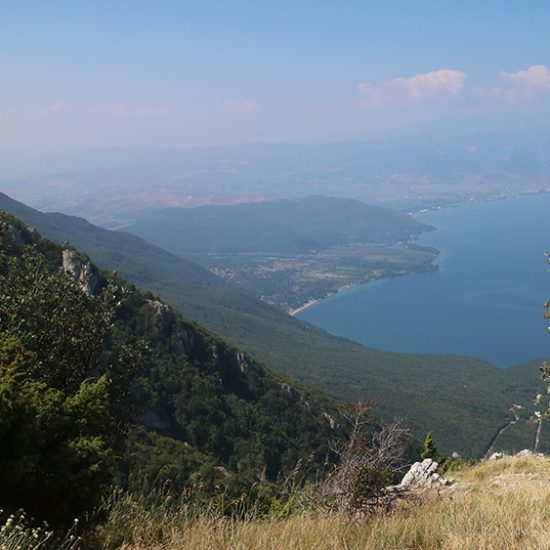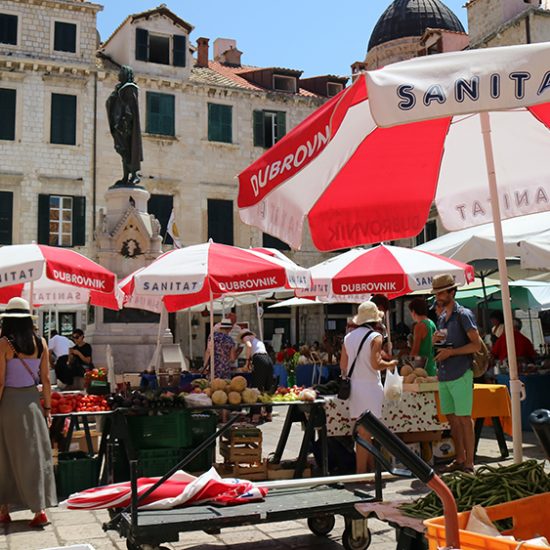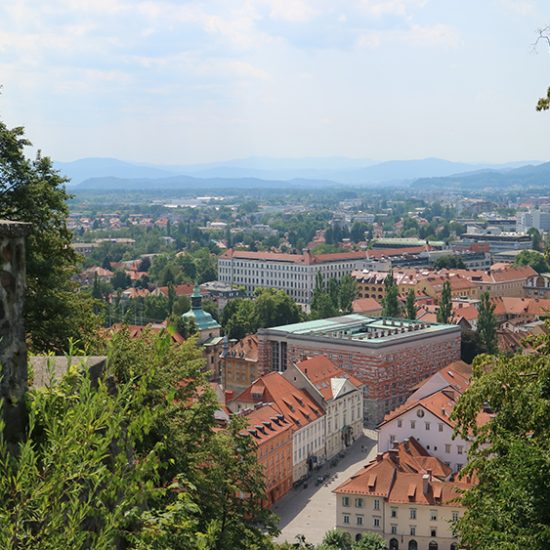1
Join trip in Ljubljana, Slovenia
Our journey through the Balkans will begin in Ljubljana, the capital of Slovenia. This historic city lies in the shadow of its old castle and upon the banks of the Ljubljanica River which meanders through the pedestrianised centre. Depending on the time of your flight or if you are extending your stay by a night then we'd recommend visiting the castle today.
This evening you might like to have dinner in one of the city's 'Gostilna' restaurant where traditional recipes are prepared with local ingredients and paired with good wines. Some of the most popular Slovenian dishes include Prekmurje a layered cake made with cottage cheese, poppy seeds and with a walnut and apple filling, Kras prosciutto an air dried ham and Bleki a beef soup with noodles. After dinner you may fancy trying a glass of Slovenia's Pleterska Khruska liquor made with brandy and pears.
Accommodation: Hotel Park (or similar)
Meals Provided: None
2
Explore Ljubljana on foot; chance to visit beautiful Lake Bled
Ljubljana is a lovely city full of art, culture and music, and the architecture has an almost Germanic feel to it. First thing this morning we will explore the city on foot with a local guide to take in some of its most attractive landmarks including the Opera House, National Gallery, Republic Square and arguably the city's most famous, Triple Bridge. Connecting the old Medieval town to the modern business centre, the bridge, originally served as the entrance to the fortified part of the city, but now is bustling with local residents.
The rest of the day is then free for you to continue to wander and enjoy the sights in Ljubljana or you might like to join a short boat trip along the Ljubljanica River to see the city from a different percpective. Alternatively you may like to join an excursion to Lake Bled, which is about one hours' drive away. The picturesque resort town of Bled is situated on a tranquil lake. It was one of the most fashionable European resorts in the early 20th century, home to the Yugoslavian Royal Family and also the summer residence of President Tito. You may wish to visit the island in the lake by traditional gondola boat known as a Pletne. Once on the island you'll find the Baroque Church of the Assumption or there's Bled Castle perched on a steep cliff above. Alternatively you might like to walk the 6 kilometres around the lake past linden, chestnut and willow trees and swans and water lilies on the water.
Accommodation: Hotel Park (or similar)
Meals Provided: Breakfast
3
Free morning in Ljubljana; train to Zagreb, Croatia
This morning is free for you to relax in Ljubljana and have lunch before taking an afternoon train across the border to Zagreb in Croatia. After a three hour journey we'll walk to our hotel to check-in before having the opportunity to go out for dinner this evening.
Tonight you might like to try the traditional Zagreb meat and vegetable stew of Cuspajz followed by the dessert Strukli a boiled dough filled with sour cream and cottage cheese or Knedli a sweet potato dumpling rolled in sugar and stuffed with fruit such as plum. If you fancy washing it down with an unusual drink then order Bambus, which consists of red wine and cola served over ice.
Accommodation: Hotel Central (or similar)
Meals Provided: Breakfast
4
Walking tour of Zagreb; visit to beautiful Plitvice National Park
After breakfast we begin with a guided walking tour of Croatia's capital, Zagreb. It is a city rich in art, culture and gastronomy, but for a capital city it doesn't experience the huge rush of tourists that most other European capitals do, with most visitors choosing instead to visit better known Dubrovnik or Split. However Zagreb is just as deserving with its blend of Austro-Hungarian architecture and more hard edged socialist buildings. The city's centrepieces are the Gothic Zagreb Cathedral and 13th century Saint Mark's Church.
Following our tour we drive for about three hours out of the city to the stunning natural attraction of the Plitvice National Park. The park boasts 16 interconnecting lakes, waterfalls and dense woodland with an array of wildlife. The rare fauna includes wild brown bear, wolves, lynx and eagles, but more commonly lizards, butterflies and various birdlife can be spotted. We will take a couple of ferries and follow the well-marked walking trails (mostly on wooden promenades) through this magical landscape. Every turn leads us to new breathtaking scenery and yet another stunning waterfall. After time for a picnic lunch we return to Zagreb for the evening.
Accommodation: Hotel Central (or similar)
Meals Provided: Breakfast
5
Train journey to Sarajevo, Bosnia and Herzegovina
This morning we walk from our hotel to the railway station to board our train to the capital of Bosnia and Herzegovina, Sarajevo, which will take us around 11 hours. As the train is a stopping service, passengers are generally locals commuting or covering shorter distances and the train can get busy when starting in Zagreb and nearing Sarajevo. The daytime journey is a fantastic way to see the spectacular scenery which is particularly prominent once we cross the border into the rural, mountainous areas of Bosnia and Herzegovina. We also get great views of Sarajevo as we approach the city, where we will be staying for the night. On arrival we will walk to our hotel and after checking in we will be free to have dinner.
On some departures, it may be necessary for us to undertake part of this journey by road. When this is the case, we will travel by train from Zagreb to Vrpolje, which is close to the border. We will then change to a private bus for the Croatia to Bosnia and Herzegovina border crossing, before continuing on to Doboj, where we will board a train to Sarajevo. This is a slightly shorter route, taking around nine hours, so we will be arriving into Sarajevo a little earlier.
Bosnian cuisine tends to use a range of subtle spices and is similar in some ways to Turkish food with grilled meats and pita bread followed by sweet and sticky nutty Baklava being a popular choice. Other local specialities include Burek, a spiral of meat filled pastry served in slices or Rastika, kale leaves stuffed with rice and minced meat. Another tasty dessert option is Tulumba, deep-fried dough served in syrup. To wash it down you could try the non-alcoholic drink Kompot made with fruit such as rhubarb or gooseberries soaked in water, sugar and spices like vanilla or cinnamon.
Accommodation: Hotel Grand - Sarajevo (or similar)
Meals Provided: Breakfast
6
Walking tour of Sarajevo; chance to visit the Tunnel Museum
They say that the events that took place on 28th June 1914 in Sarajevo triggered the start of World War I, and this morning we'll take taxis into the city centre to begin our walking tour with a local guide to find out more. This event was the assassination of Archduke Franz Ferdinand and his wife at the northern end of Latin Bridge by a 19 year old Bosnian-Serb called Gavrilo Princip.
We will see the Eternal Flame, which is a memorial to all those that lost their lives during the war. We also see excellent examples of Austro-Hungarian architecture, namely the City Hall and learn more about the dreadful fate of the Jewish community which once thrived in this city, then known as 'Little Jerusalem'.
The afternoon will be free to spend as you wish and to make your own way back to our hotel at a time of your choosing. You may want to take a relaxing wander through the city's Old Town or as with everywhere else in the Balkans grab a strong coffee and watch local life go by. There is also an array of museums dedicated to the varied histories of the capital, including the Tunnel Museum depicting life during the Sarajevo Siege in 1992-1995 and showing how the resident civilians managed to keep themselves supplied during the longest siege in modern history. You may choose to join the Times of Misfortune tour which includes entry to the Tunnel Museum.
Accommodation: Hotel Grand - Sarajevo (or similar)
Meals Provided: Breakfast
7
Scenic rail trip to Mostar with a walking tour on arrival
This morning we walk to the railway station to board the very scenic train ride between Sarajevo and Mostar, which takes us just under three hours. As we chug slowly through the mountains, which were once occupied by Bosnian Serbs during the Bosnian War, the dramatic scenery will capture our attention. We arrive into Mostar this afternoon and after taking taxis to our hotel to check-in we return back to the city centre by taxis and begin our guided walking tour.
Mostar is in the Herzegovina region of the country and still displays vivid scars from the 18 months the city was held under siege in the nineties. Much of Mostar was ruined during this period; however, with its relaxed atmosphere it's hard to believe the conflicts are such recent history. The city still has a very Ottoman feel to it with its winding cobbled stone streets and skyline dotted with domes and minarets. We will see the bazaar, mosque and old city on the way to one of the country's most famous landmarks, Stari Most. This bridge is a reconstruction of the original Ottoman bridge that was built in the mid-1500's, but was destroyed by shelling in 1993.
Accommodation: Hotel City (or similar)
Meals Provided: Breakfast
8
Visit Old Town Dubrovnik and the Bay of Kotor en route to Podgorica
Today will be full-on but worth the energy! Leaving Mostar early this morning we will drive to Podgorica in Montenegro via
Dubrovnik, Croatia and the Bay of Kotor. Depending on border crossings we hope to have around two and half hours to see the Old Town area of Dubrovnik. This city stands proudly on the coast surrounded by its ancient walls and the crystal clear Adriatic Sea just beyond. Despite the horrific shelling Dubrovnik came under in 1991, the Old Town is a UNESCO World Heritage Site and has been remarkably well restored.
We then continue down the coastline, crossing into Montenegro where we stop in the old Mediterranean port of Kotor. Sitting on the coast, Kotor is surrounded by dramatic cliffs and is one of the best preserved Medieval old towns on the Adriatic Sea. We hope to have about three hours to explore, before heading to Podgorica for the night.
This evening you might like to try a popular local Montenegrin dish for dinner such as Pohovani Kackavalj - fried cheese or Corbast Pasulj - a stew made with beans, smoked ribs, salami and sausage. You could also sample a local beer, such as the dark ale Niksicko.
Accommodation: Hotel Terminus (or similar)
Meals Provided: Breakfast
9
Scenic train journey to Belgrade, Serbia
This morning we walk the short distance to the railway station to board one of the most scenic rail routes in Europe; this 11 hour journey from Podgorica to Belgrade will offer the most astounding scenery of any of the rail journeys we take during this trip. The backdrop is a mixture of gorges, canyons and snow-capped mountains as we ascend and descend following the natural topography of the land. This beautiful setting and his passion for rail travel was the motivation for former Yugoslavia's Head of State, Tito, to have his own train built in 1959. Between the trains' inaugural trip until his death in 1980, Tito made this journey often, regularly hosting many famous guests within the deluxe carriages, including Queen Elizabeth II. We arrive in Belgrade this evening and take a taxi to the hotel where we stay for the next three nights.
Paprika is arguably the most popular ingredient in Serbian cooking and they tend to use the red fruit itself rather than the dried spice. You'll find it chopped up in salads with tomatoes, cucumber and cheese, chargrilled with barbequed meats, pickled, stuffed and even mashed. They also love cream and Kajmak a partially fermented thick cream which is often served with grilled meats or fresh bread. It's a bit like a cross between sour cream and clotted cream. Rakia is the most popular spirit and it's normally distilled with plums or grapes, but you can also find more unusual variations like quince, walnut or honey.
Accommodation: Hotel Prag (or similar)
Meals Provided: Breakfast
10
Excursion by train to Novi Sad; traditional Serbian barbeque dinner
We leave our base in Belgrade this morning and walk to the station to board a train, which takes just under two hours, for a day trip to Novi Sad. Although the second largest city in Serbia, Novi Sad offers a much more laidback atmosphere standing tall above the Danube River. The city is thought to have originated and expanded from the historic Petrovaradin Fortress, which sits proudly on the cityscape. We will be guided around here on foot and using the local buses to see the main points of interest including the fortress that is rich in Roman, Greek and Byzantine history, the Greek school and the Orthodox cathedral. We then have a couple of hours free time to wander through the pedestrian area of the city, maybe choosing to have a drink at one of the many cafes that line the river bank and watch life go by, before journeying back to Belgrade.
Tonight we walk from our hotel to a local restaurant where we'll experience a traditional Serbian barbeque dinner with live music.
Accommodation: Hotel Prag (or similar)
Meals Provided: Breakfast & Dinner
11
Walking tour of Belgrade; overnight train to Skopje, Macedonia
We begin today with a guided walking tour to see the earliest known areas of the city, Belgrade Fortress and Kalemegdan Park. The fortress is a very appropriate setting to learn about the city's history through the centuries including Medieval, Roman and Ottoman periods. The Romans originally built a fortification here in 2nd century AD due to its excellent strategic viewpoint on the hill overlooking the city and the confluence of the Sava and Danube Rivers. However, when the Huns and the Goths later waged war, the original structure was burnt down but fortunately rebuilt in the 6th century.
The afternoon will be free for further personal exploration, perhaps you will take the time to absorb the local atmosphere in
Kalemegdan Park which is popular with the locals or take time to visit Tito's Mausoleum which is a rite of passage when in Belgrade.
This evening we will walk from our hotel to the train station and board our overnight train journey, which takes around nine and a half hours. We will use sleeper carriages that have up to six bunk beds in each compartment (three beds above one another on each side) and two shared toilet facilities at the end of each carriage. There are no shower facilities on board.
Accommodation: Overnight Train Belgrade to Skopje
Meals Provided: Breakfast
12
Orientation tour of Skopje; traditional Macedonian dinner
An early arrival on the overnight train will allow plenty of time to get to know the best of Skopje, the capital of Macedonia and once home of Mother Teresa. We start our explorations by driving up Mount Vodno to watch the sunrise over the city below. After this we drive to the nearby Ethno Village where we enjoy a traditional Macedonian breakfast in a local restaurant. We then continue to our hotel to leave our luggage before taking taxis into the city centre for an orientation tour conducted by our Explore Leader including highlights such as the fortress, 12th century Old Bazaar, which is the largest and most well preserved bazaar in south-east Europe, and the Holocaust Museum. In 1963 a huge earthquake rocked the city and destroyed an estimated 75% of the town, but it is still rich in historic culture and Ottoman heritage. Skopje has been used a pawn in many wars, including World War II and many empires have ruled over the city, all having influenced the architecture, religion and traditions. Despite the turbulent and sometimes violent history, Skopje is now a peaceful city where residents are free to practice all religions, the main faiths being Macedonian Orthodox and Islam. The city boasts many beautiful churches and mosques, although you'll notice mostly minarets on the skyline due to a historic law that was enforced by the Turks stating Christian buildings could not be taller than mosques.
This afternoon we have free time to further enjoy the city or to relax following the overnight journey and busy morning explorations. We will end today with dinner in a traditional local Macedonian restaurant.
Accommodation: OK Hotel (or similar)
Meals Provided: Breakfast & Dinner
13
Train to Bitola and visit to the ancient city of Heraclea
Taking a step back in time, today we visit the ancient Macedonian city of Heraclea. We leave our hotel early this morning by taxi to the station where we board our four hour train journey to Bitola in southern Macedonia, which is a short distance from Heraclea. We drive to our hotel to check-in before our Explore Leader takes us on an orientation tour of Bitola. Sitting on the bank of the Dragor River, the exact origin of bustling Bitola is unknown, but it seems it grew up in the shadow of Heraclea only to outlive its parent city. Today, despite being a busy commercial centre, Bitola still radiates the relaxed cafe culture that is so popular in this area of Europe.
This afternoon we drive the short distance to ancient Heraclea for a guided walking tour. Named after the legendary Greek mythical hero, Heracles, it dates back to approximately 4th century BC, but many of the remains discovered are from around 2nd century BC when the Romans invaded and conquered it. The site of this once prosperous city has some excellent ruins including an amphitheatre once used for gladiator fighting and preserved mosaic floors.
This evening you are free to have dinner in Bitola. A popular Macedonian dish is Turlitava, a meat and vegetable stew baked in a terracotta pot. Ravanija is a traditional dessert which originates from when the country was under Ottoman rule; it's a type of cake with a sherbet top. Macedonian wine is a popular choice with red being the more dominate option which is usually made using the Vranec grape or sometimes Stanusina Crna, which is indigenous to the country.
Accommodation: Hotel Sator (or similar)
Meals Provided: Breakfast
14
Journey to Ohrid with an afternoon boat ride on the lake
This morning we drive through the beautiful Galicica National Park to Ohrid. Popular for its wealth of attractive scenery including mountains, lakes and impressive caves, the national park is also very important to the area's agriculture industry. We will make a number of short stops along the way to absorb the extraordinary landscapes and to take some photographs. Before arriving in Ohrid we will also visit the Saint Naum Monastery, which is one of the most photographed places in the country, with its red tiled roof set at the water's edge on the banks of Lake Ohrid; one of Europe's oldest and deepest lakes.
Later this afternoon we arrive into the 3000 year old town of Ohrid in time to have a tour conducted by our Explore Leader of this historic settlement, which has an almost Mediterranean feel to it and is nestled into a bay on the lake. Weather permitting we will take a trip out onto the lake by boat, so we can see the town from a different perspective. To end the day we will walk the short distance to a local restaurant to have a traditional fish supper. If we're lucky this will include Lake Ohrid brown trout which is a speciality often served in soups or as a whole stuffed fish.
Accommodation: Lebed Hotel (or similar)
Meals Provided: Breakfast & Dinner
15
Visit to Mavrovo National Park en route to Pristina, Kosovo
This morning we make the journey to Kosovo's capital, Pristina. The drive will take us around nine hours in total but we will make several stops along the way. We visit Saint Jovan Bigorski Monastery, dedicated to Saint John the Baptist and built almost 1000 years ago. We also stop in the Mavrovo National Park which is home to a wealth of pine forests, field covered plains, waterfalls and also Macedonia's highest mountain, Mount Korab, standing at 2,764 metres high.
Once we cross the border into Kosovo we drive the final section to the capital city Pristina. Kosovo is still almost untouched by tourism and we'll get a taste of this unique destination by staying here overnight. After checking in to our hotel we have about an hour free before having the opportunity to join our Explore Leader for a final dinner and then to take a walk through Mother Teresa Square before returning to our hotel.
Kosovo cuisine has been influenced by many different countries over the years and is quite similar to that found in Albania. Bread and dairy are important elements of most dishes and Flia is a popular dish which is similar to a crepe like layered tart normally served with Kaymak cream. Pies, stews and grilled meats with potatoes and rice are also all popular. If you want to try a local liquor then Boza is a thick sticky sweet drink made from malted corn and flour.
Accommodation: Hotel Garden (or similar)
Meals Provided: Breakfast
Our trip ends at our hotel in Pristina this morning. Depending on the time of your flight or if you're extending your stay by a night then we'd recommend exploring more of the city. It's not the prettiest of the places that we visit on this trip but it does have a number of attractions that are worth visiting and a lively atmosphere.
You could go into the Emin Gjiku Ethnographic Museum, which gives you a great introduction to traditional Kosovar culture. Set in two charmingly preserved Ottoman houses, within a large walled garden, there is a range of weapons, clothing and jewellery and household items exhibited. In the city's bazaar you can see a 26 metre high clock tower, which dictated when stall holders should close for pray. It's worth stopping by at the National Library to admire the unique architecture of this bizarre building. The Independent House of Kosovo tells the story of the former president Ibrahim Rugova and Kosovo's campaign for independence from Serbia and you can also see the Newborn Monument, which was unveiled on the 17 February 2008 when Kosovo first declared its liberation. Sultan Mehmet Fatih Mosque is the city's most important and Jashar Pasha Mosque was recently beautifully restored as a gift from the Turkish Government. If all this exploring makes you thirsty then you could stop by at Pristina's first microbrewery, Sabaja Craft Brewery.
Meals Provided: Breakfast
Call for assistance: 1-800-481-9739 ext. 1
Mention Promo Code for Savings: TRIPMERCH100

